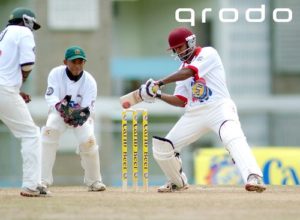Has Technology Really Changed Sports Viewing for the Better?
1It may seem like a silly question to ask. After all, compare the TV coverage we get today of major sporting events with that of even 20 years ago and the differences are there for all to see. Where before the action was captured by a few cameras, today we’re treated to multiple camera angles, super-slow-mo and on-screen analysis of the action as it’s occurring – not to mention HD video quality.
Alongside this, there have been a number of technological advances that done everything from change the way that the officials adjudicate over sports including soccer, rugby and tennis, to allowing us to stream the action as we bet on it.
One of the first of these to be introduced was Hawk-Eye. Invented in the UK by the appropriately-named Paul Hawkins, suddenly there was a way that cricket umpire’s LBW decisions could be brought into question along with the calls from line judges in tennis. Although not totally accurate – there’s a reported tolerance of around 3.5 mm in its ball-tracking ability – it’s generally agreed to be close enough to be trusted.
In cricket, this is joined by the Snickometer, which uses the combination of stump mike and cameras to pick up the finest of edges. Then, far more controversially, there is the Video Assisted Referee (VAR) system that has been brought into use in both soccer and rugby, which is certainly not short of its critics.
On a more positive side, with betting sites’ increasing use of live streaming NZ sports fans have never had so many opportunities to enjoy in-play wagers as they watch the big events. Indeed, for many, this is the only way that they can watch live and uninterrupted. But while this is undoubtedly a positive use of technology, the preceding three examples are not quite so clear-cut.
The first criticism that can be made is that the use of Hawk-Eye, the Snickometer and VAR invariably slows up the action. In fast-moving games like soccer and rugby, this can be very frustrating for fans. Cricket, perhaps, is a little different, as waiting for the third umpire’s decision can actually add some tension to the play, particularly when it could prove to be a critical time for the loss of a wicket for the batting side or a breakthrough for the bowling one.
The use of review-based technology also introduces another complication for both cricket captains and tennis players alike. With the number of unsuccessful reviews that they are allowed to make being limited, using them indiscriminately is a potentially match-losing technique – as the Aussies found in the electrifying 2019 Headingley Test match.
And, while these are all good reasons to question whether technology really enhances sport, there’s something else to take into consideration. In the final analysis, sport is all about moments of human success and error. But by putting the decision making burden on technology we lose an element of humanity – and, for some people, that may be too big a price to pay.



[…] and listen to our favourite musical artists whenever and wherever the fancy takes us, while even the sporting world has been revolutionised by the arrival of streaming services. It’s no surprise, then, that this is one of the most […]